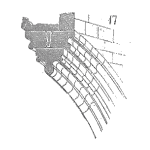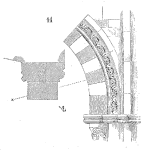
You may have read about the 2007 incident at T2 laboratories in Florida – the explosion killed four of the company’s 12 employees, injured four other workers and 28 community members.
[Read more…]Your Reliability Engineering Professional Development Site
Find all articles across all article series listed in reverse chronological order.
by Sanjeev Saraf Leave a Comment

You may have read about the 2007 incident at T2 laboratories in Florida – the explosion killed four of the company’s 12 employees, injured four other workers and 28 community members.
[Read more…]by Carl S. Carlson Leave a Comment
“The important thing is not to stop questioning.” Albert Einstein
I always encourage readers to ask questions, and include a link in my article to make it easy. Asking questions is a great way to learn.
A reader recently asked, “When performing an FMEA, should the effect consider the mitigated case or unmitigated case? In this article we will look at different aspects that can be considered in order to answer the question.
by Arun Gowtham Leave a Comment

There’s a quote one of my previous managers had in his cubicle: “Being a manager is easy, it’s like riding a bike. Except that the bike is on fire, you’re on fire, and everything is on fire”. I chuckle every time I read it and then reflect upon the reality of dealing with project deadlines, deliverables, and performance. Reliability Engineering & Asset Maintenance initiatives have a project management aspect to them.
[Read more…]by Miguel Pengel Leave a Comment

It’s no surprise that the majority of Australia Mining companies don’t leverage the full use of their data to manage their (expensive) assets better. Industry seems to think this is just an adoption issue, where the term “If it ain’t broke don’t fix it” comes to mind. But the reality is that there are far more underlying issues we need to consider why Mining is lagging behind other major industries such as Oil and Gas, Aviation and Power Generation, and yes.. what we do with all our data plays a big part.
[Read more…]by Greg Hutchins Leave a Comment

The five in a 5S workplace organizational and housekeeping methodology refers to five steps – sort, set in order, shine, standardize and sustain. Safety should be the honorary sixth “S.
Many manufacturing facilities have opted to follow the path towards a “5S” workplace organizational and housekeeping methodology as part of continuous improvement or lean manufacturing processes. The term refers to five steps – sort, set in order, shine, standardize and sustain – that are also sometimes known as the five pillars of a visual workplace.
[Read more…]
The likelihood of component failure reflects the operational risk present. By reducing the likelihood of component failure to zero, zero operational risk is achieved.
Operational Risk is a mathematical formula, with variables that can be manipulated and controlled to reach the desired outcome. Below are three equations related to operational risk that you can use to change your future.
[Read more…]by Nancy Regan Leave a Comment

RCM may reduce scheduled maintenance if (for example) the current maintenance plan is high in scheduled restoration and scheduled replacement tasks.
[Read more…]by Sanjeev Saraf Leave a Comment

Most people now flip through reports searching for useful information, stopping to read only if something seems interesting. Blame it on the information age or social media. But if skimming is too daunting, your document is unlikely to achieve its purpose. These are five writing tips to make it easier for readers to skim your business writing.
Use meaningful subheadings that tell a story rather than descriptive labels. Descriptive labels are a product of traditional writing that provides little useful information. Each subsection of your report should have a heading that summarizes its contents. Descriptive subheadings allow readers to understand your basic messages without reading every word. [Read more…]
by Mike Sondalini Leave a Comment

Now SFAIRP is the Criterion to Judge If You have Sufficiently Controlled Your Workplace Hazards
Risk Assessment Used to be Based on ALARP to Decide if Workplace Hazards were Sufficiently Controlled, But Today You Need to Use SFAIRP
The original OHS risk assessment process, procedures and techniques identified hazards; assessed risk; established risk controls; reduced and managed risks to ‘as low as reasonably practicable’ (ALARP), but safety laws are now changing to ‘so far as is reasonably practicable’ (SFAIRP) [Read more…]
by Greg Hutchins Leave a Comment

This article is the seventh of fourteen parts to our risk management series. The series will be taking a look at the risk management guidelines under the ISO 31000 Standard to help you better understand them and how they relate to your own risk management activities. In doing so, we’ll be walking through the core aspects of the Standard and giving you practical guidance on how to implement it. [Read more…]

For the month of September, I thought it would be appropriate to write a post on Terrorism Risks.
Since 2001, there have been an average of 5 attempted terror attacks annually in the U.S. that have resulted in arrests, trial, or raising of the DHS threat level. Now you know what changes the threat level at the airport.
[Read more…]
The calculation of reliability consists of the comparison between stress and strength. If we consider stress and strength as deterministic quantities, failure occurs when the stress exceeds strength. In reality, stress and strength are stochastic variables (Figure 1a). If the two curves overlap (Figure 1b), failure may occur. Let us suppose that s and S are continuous random variables with probability density functions f(s) and f(S), respectively.
[Read more…]by Mike Sondalini Leave a Comment

You will find example process diagram layouts with the most effective flowchart templates to use, what to include in them so that the flow chart drives business results and personal performance (and you will be surprised at how easy they are to create). With the right layout and the inclusion of ACE 3T (Target-Tolerance-Test) quality assurance standards your process flowcharts and procedures will drive business and workplace performance. First it is necessary to layout your flowcharts so it is totally clear what must happen in a process or procedure, who is responsible to make it happen, and how their performance will be measured.
[Read more…]by Greg Hutchins Leave a Comment

In CERM Risk Insights #354 I discussed the risk management study of local governments in New Zealand. One of the cases in the study was Environment Canterbury Regional Council. The regional council’s focus and the increasing concerns about environmental risks by both the public and private sector represents a challenge to the common approach used by most of the New Zealand local governments, ISO 31000:2018 and the International Organization for Standardization (ISO) more generally. This piece discusses this challenge to ISO 31000:2018 and its implications.
[Read more…]